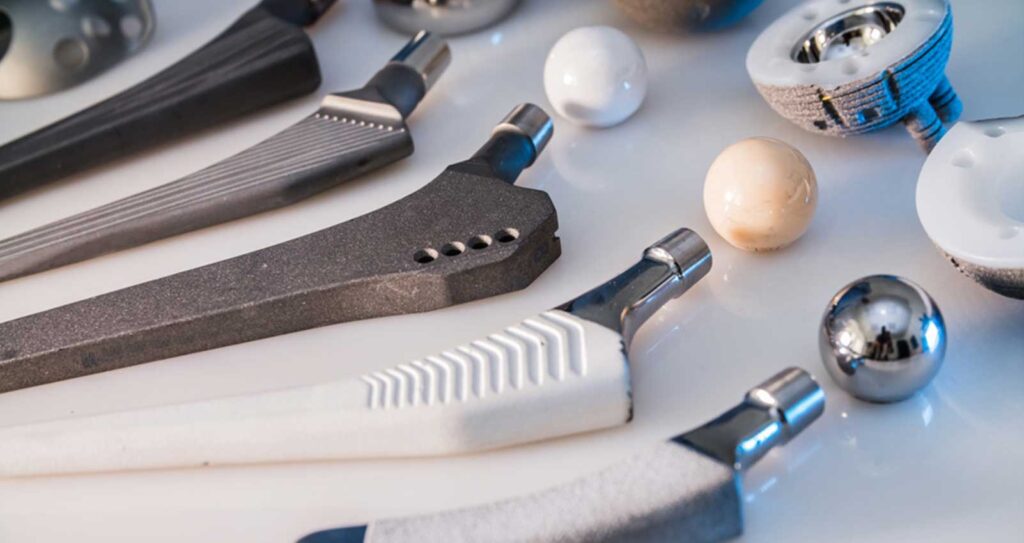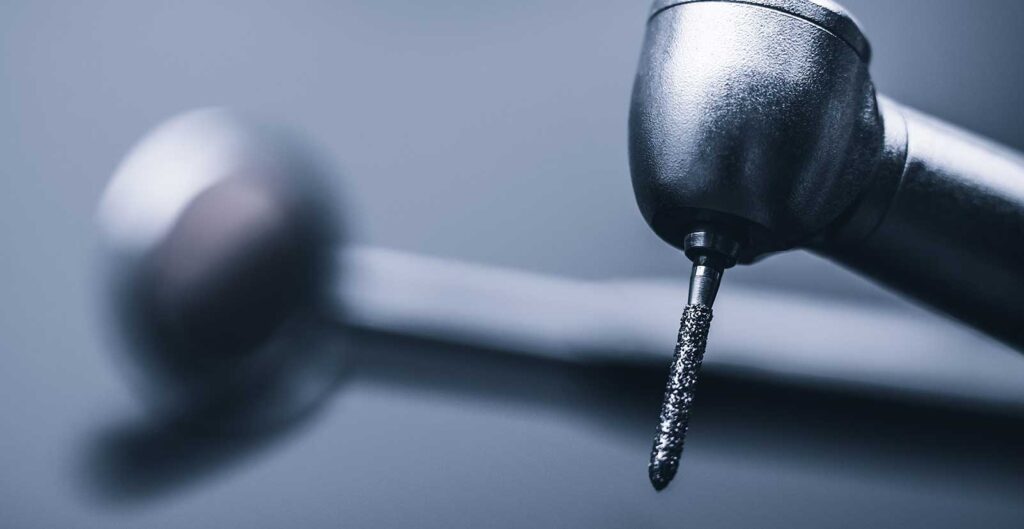“Safety first” is the overriding principle in medicine. Anyone active in the Medtech market must
guarantee a high quality culture in the supply chain. What manufacturers should look out for when
choosing a partner.

Who does not know someone in their family or circle of
acquaintances who has an artiicial hip joint? When the
largest ball-and-socket joint in our body goes on strike,
artiicial replacement is a blessing for patients. Today,
this surgical procedure is considered routine. In view of
demographic change, the market for implants that give
older people back their lost mobility is growing. In the
process, the technology of surgical mechanics and
machine tool builders is becoming ever more
sophisticated. What is the key here?

A hip joint works like a sliding bearing: the parts that move relative to each other have direct contact.
And this is exactly the point where it can become painful due to wear and tear. New prostheses are
modeled as closely as possible on the natural joint and are made of metal alloys, ceramics, and special
plastics. The artificial joint consists of a stem that is anchored in the thigh bone, the femoral head, the
hemispherical cup that is inserted into the natural acetabulum, and a cup insert, also called an inlay. For
the patient to be able to walk and play sports again soon after surgery, the ball and socket must fit
together without friction. This sounds simple, but it is not.
It is no coincidence that endoprosthetics, like all applications on humans, is subject to strict regulatory requirements. In addition, bacteria and contaminants in artificial joints are dangerous enemies of successful treatment. Biocompatibility is therefore a must. The be-all and end-all in the manufacture of hip prostheses is the polished surfaces of the ball, cup and cup insert with the fineness required by
The company delivers “customized” in close exchange with the customer. Be it the manufacturer of the joints themselves or the machines that produce the components for them. Polycrystalline diamond, which Pureon produces itself in the USA, has proven ideal for polishing the joint components. The combination of a rough particle surface, optimal grain shape and an application-specific suspension formulation makes the difference in quality and gives our customers higher productivity,” explains Martin Spring, co-CEO of Pureon. This is because the Pureon team optimally matches the properties of the carrier fluid, such as temperature or viscosity, to the polishing process in question. The specific formulations are applied to the joint, sprayed or brushed, and then polished to remove minute damage to the surface step by step as the grain size of the polishing agent becomes finer and finer.
At Pureon, the specialists leave nothing to chance. The internationally positioned medium-sized company has a quality management system according to ISO 9001 and can control – and trace – every step in the value chain from in-house production of the diamonds to delivery.
manufacturers and surgeons. And, of course, the patient relies on his prosthesis functioning fflawlessly for decades. Pureon’s high quality standards can guarantee this.
It is no coincidence that endoprosthetics, like all applications on humans, is subject to strict regulatory requirements. In addition, bacteria and contaminants in artificial joints are dangerous enemies of successful treatment. Biocompatibility is therefore a must. The be-all and end-all in the manufacture of hip prostheses is the polished surfaces of the ball, cup and cup insert with the fineness required by
The company delivers “customized” in close exchange with the customer. Be it the manufacturer of the joints themselves or the machines that produce the components for them. Polycrystalline diamond, which Pureon produces itself in the USA, has proven ideal for polishing the joint components. The combination of a rough particle surface, optimal grain shape and an application-specific suspension formulation makes the difference in quality and gives our customers higher productivity,” explains Martin Spring, co-CEO of Pureon. This is because the Pureon team optimally matches the properties of the carrier fluid, such as temperature or viscosity, to the polishing process in question. The specific formulations are applied to the joint, sprayed or brushed, and then polished to remove minute damage to the surface step by step as the grain size of the polishing agent becomes finer and finer.
At Pureon, the specialists leave nothing to chance. The internationally positioned medium-sized company has a quality management system according to ISO 9001 and can control – and trace – every step in the value chain from in-house production of the diamonds to delivery.
manufacturers and surgeons. And, of course, the patient relies on his prosthesis functioning fflawlessly for decades. Pureon’s high quality standards can guarantee this.

When Pureon is used in joint manufacturing, 90 percent of the added value has already been achieved. It
is the last 10 percent that counts. This is also true for another application of diamond products in
medicine: for dental instruments such as drills, grinders, or brushes. As with all Pureon applications, it is
also very important for customers in the dental sector that the surface quality achieved is reproducible,
i.e., that the same quality can always be delivered. Because the demands are growing.
This is clear in the world of the dental industry: Apart from the rapid digitalization of the entire workflow, which provides patients with much more service, the demand for sophisticated esthetic-cosmetic dental treatments is increasing. Because even in countries like India, China, Russia or Thailand with growing middle classes, people want to be able to smile with beautiful teeth.
This is clear in the world of the dental industry: Apart from the rapid digitalization of the entire workflow, which provides patients with much more service, the demand for sophisticated esthetic-cosmetic dental treatments is increasing. Because even in countries like India, China, Russia or Thailand with growing middle classes, people want to be able to smile with beautiful teeth.
Interested in solutions
in the Medtech field?
We are happy to share our knowledge with you
and remain at your disposal for any further questions.
and remain at your disposal for any further questions.

Juergen (Jay) Walter
-
Industry Expert
MedTech - +1 440 821 2866
- jwalters@pureon.com
Find out more about our Total Process Solutions.
Find out more about our polishing solutions.
